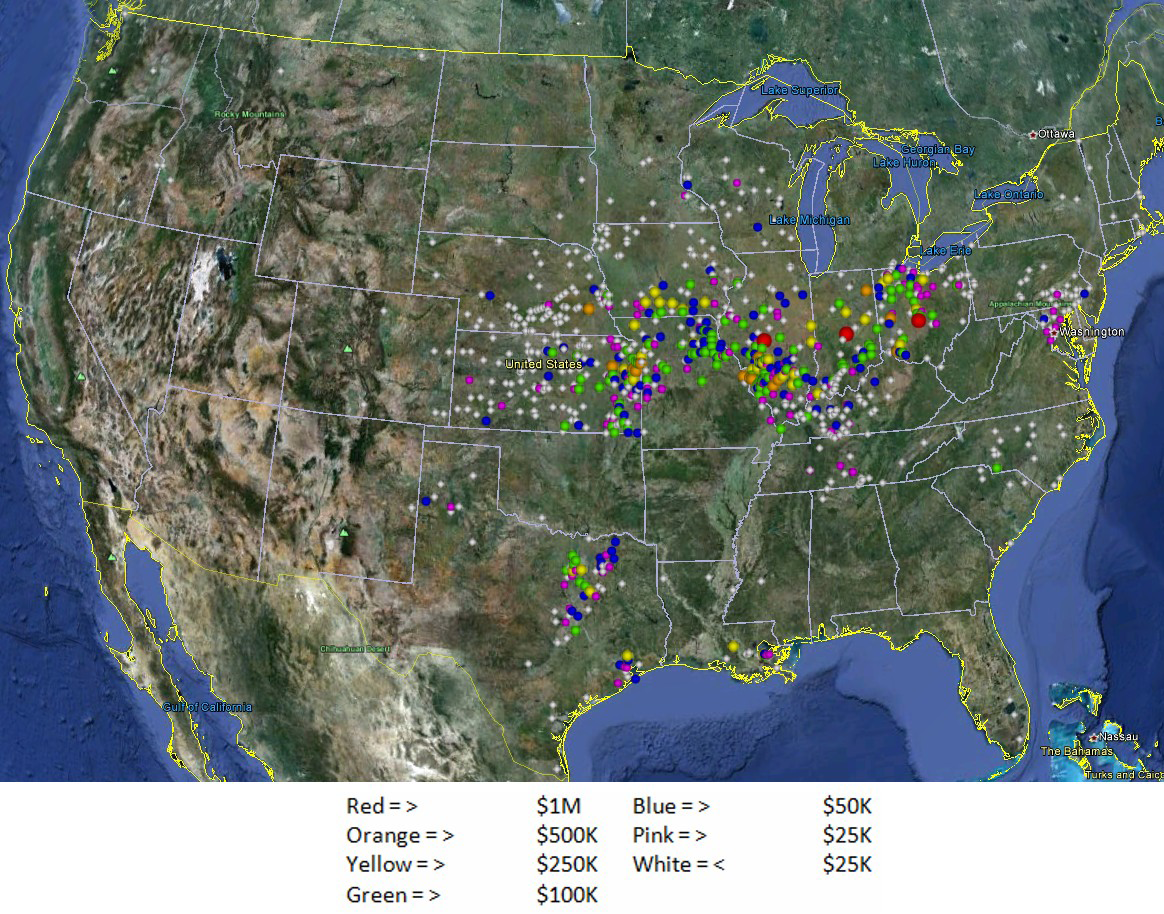Washington, DC–(ENEWSPF)–January 24, 2013. Checks are now being sent to 1,085 community water systems across the U.S. in the final phase of a $105 million settlement with Syngenta, the largest manufacturer of the toxic weed killer atrazine. The class action settlement, City of Greenville v. Syngenta Crop Protection, Inc., Case No.: 3:10-cv-00188-JPG-PMF, stems from a lawsuit spanning eight years and is meant to help reimburse communities for past expenses associated with atrazine removal.
“Science has been fighting an uphill battle against giant pesticide manufacturers like Syngenta who claim that a little weed killer in your drinking water won’t hurt you. Independent scientists now believe that even trace amounts can harm you and your children for generations to come,” the lead plaintiff’s lawyer Stephen M. Tillery told the media.
Atrazine is used nationwide to kill broadleaf and grassy weeds, primarily in corn crops, but also in turf management. Beyond endocrine disruption, the chemical has been implicated in a wide range of human health effects, including cancer, neurotoxicity, and kidney and liver damage. A study by the U.S. Geological Survey found atrazine in approximately 75 percent of stream water and 40 percent of groundwater sampled near agricultural areas. In 2012, U.S. Representative Keith Ellison (D-Minn.) reintroduced a bill (H.R.4318) that would ban the production, sale, importation or exportation of any pesticide containing atrazine. However, as it currently stands, nearly 10 years after atrazine was banned in the European Union, the chemical is still sold in the United States.
The settlement formula allocates the proceeds among claimants by first awarding each claimant a payment of $5,000, which is equal to the approximate cost of 20 water tests. Each claimant is then allocated a percentage of the remaining fund based on evidence of: (1) the levels of atrazine in its water; (2) how often atrazine has been found in its water; (3) how long ago atrazine was found in its water; and (4) the claimant’s size. Generally, if a system processed more water or frequently had high concentrations of atrazine, it is eligible for more money. Plaintiffs that are a part of the class will not be able to sue, continue to sue, or be part of any other lawsuit regarding the presence of atrazine in their drinking water or water sources for the next 10 years.
In approving the settlement back in October, United States District Judge J. Phil Gilbert noted that the case had been extremely hard-fought and that in the course of the litigation, the parties collected, reviewed, and produced more than 10 million pages of discovery. The Court found that: “The settlement was reached after arm’s-length negotiations in a matter where the plaintiffs faced a number of very serious obstacles to their claims – any one of which might leave them with no recovery whatsoever. Nevertheless, even with immense risks, Plaintiffs were able to secure a $105 million settlement fund. The amount represents approximately 76 % of the $139 million estimated by Plaintiffs’ expert to be the class’s maximum potential recovery for past damages. This is a substantial recovery in any litigation and is far greater than the percentages found adequate by numerous other courts.”
Community Water Systems will receive payments under the formula approved by the Court:
Dollar Amount – Number of Claims
$5,000 to $10,000 – 545
$10,000.01 to $25,000 – 165
$25,000.01 to $50,000 – 105
$50,000.01 to $100,000 – 99
$100,000.01 to $250,000 – 116
$250,000.01 to $500,000 – 38
$500,000.01 to $1,000,000 – 14
Above $1,000,000 – 3
Total Claims 1,085
Below is a rundown of some of the funds that have been distributed:
Illinois:
The state will receive over $15 million. Claims were filed by 143 cities and towns to help recoup the cost of removing atrazine from their drinking water. Of this, 46 cities will receive between $100,000 and $1.3 million. (Source: The Bengil Post)
Indiana:
Indiana will receive over $7 million. Fifty-one cities and towns in Indiana filed claims to help recoup the cost of removing atrazine from their drinking water, with 16 cities receiving at least $100,000. Indianapolis will receive checks of more than $1 million. (Source: The Indiana Lawyer, Courier Press)
Nebraska:
Approximately $2 million is set to go to 106 Nebraska communities. The largest amount in the state will go to the city of Lincoln, at $800,000. (Source: Journal Star)
Ohio:
Five Hancock County towns are receiving settlement checks for an atrazine problem that started 20 years ago. The City of Carthage will receive a check from the settlement fund for $123,618.39 to help reimburse the cost of removing atrazine from its drinking water supply. LaHarpe received $27,539.27; Nauvoo receives $9,227.01; Warsaw receives $8,967.88 and Hamilton receives $6,345.84.
“From 1994 to 1997, we were spending $25,000 to $30,000 to straighten out our atrazine problem,” Carthage mayor, Jim Nightingale told the Journal Pilot. “In 1995 we had a meeting with a meal and started brainstorming.”
Additionally, the city of Wilmington will receive $181,468.82. The city of Lima received $227,000. (Sources: Wilmington News Journal, The Lima News, Journal Pilot)
Missouri:
City of Cameron has received $274,785.51 (Source: My Cameron News)
Hawaii:
Kaua’i will receive $6,692.96. According to Kaua’i Department of Water Manager and Chief Engineer David Craddick, “The money we received does not cover the full cost of testing for atrazine, but we would have received nothing if not for the diligence of the County Attorney and the Water Department lab personnel.”(Source: Kauia Department of Water)
For additional information on the settlement, visit www.atrazinesettlement.com.
Sources: Korein Tillery Press Releases, January 16, 2013, October 23, 2012, http://www.beyondpesticides.org
All unattributed positions and opinions in this piece are those of Beyond Pesticides.









